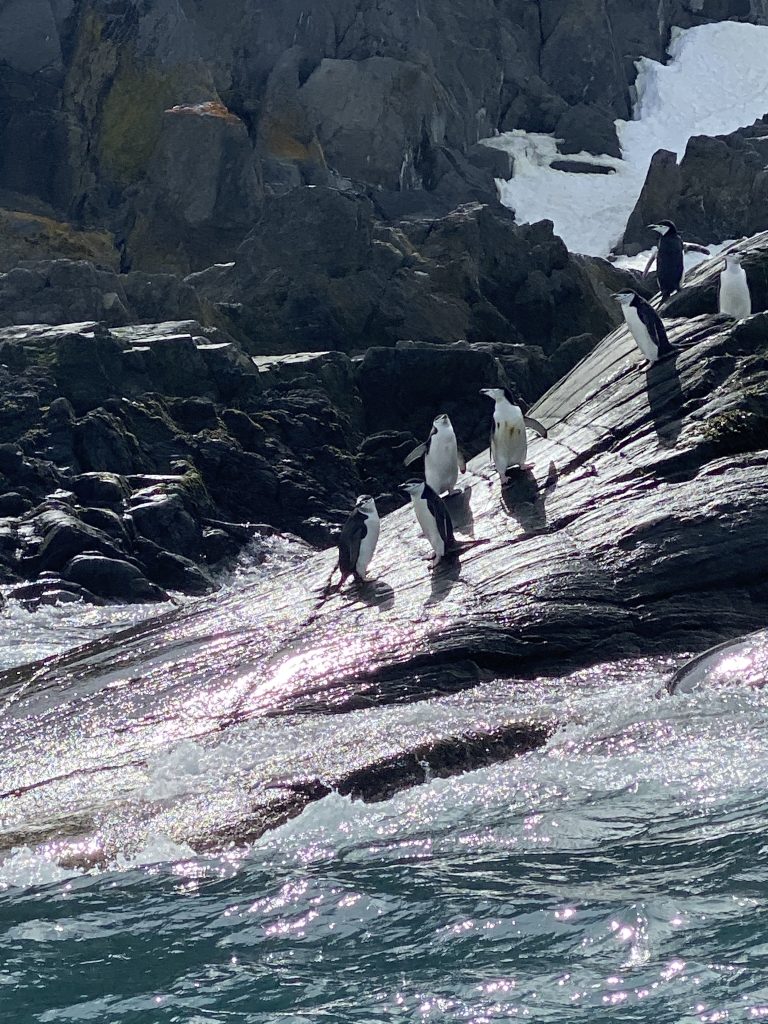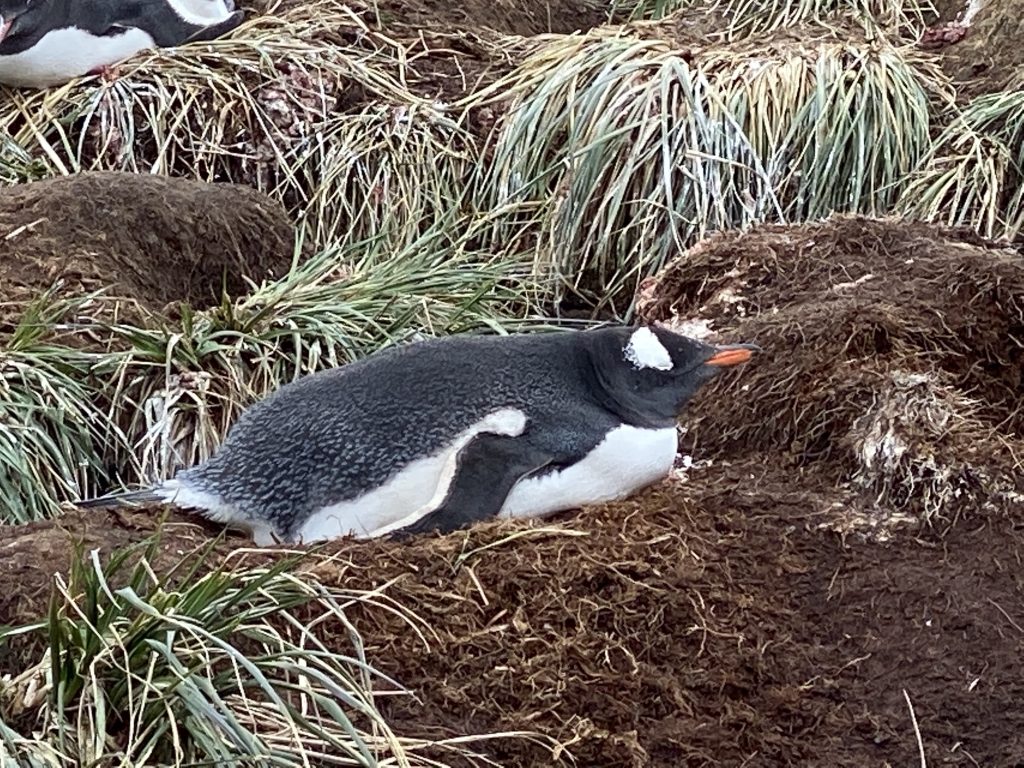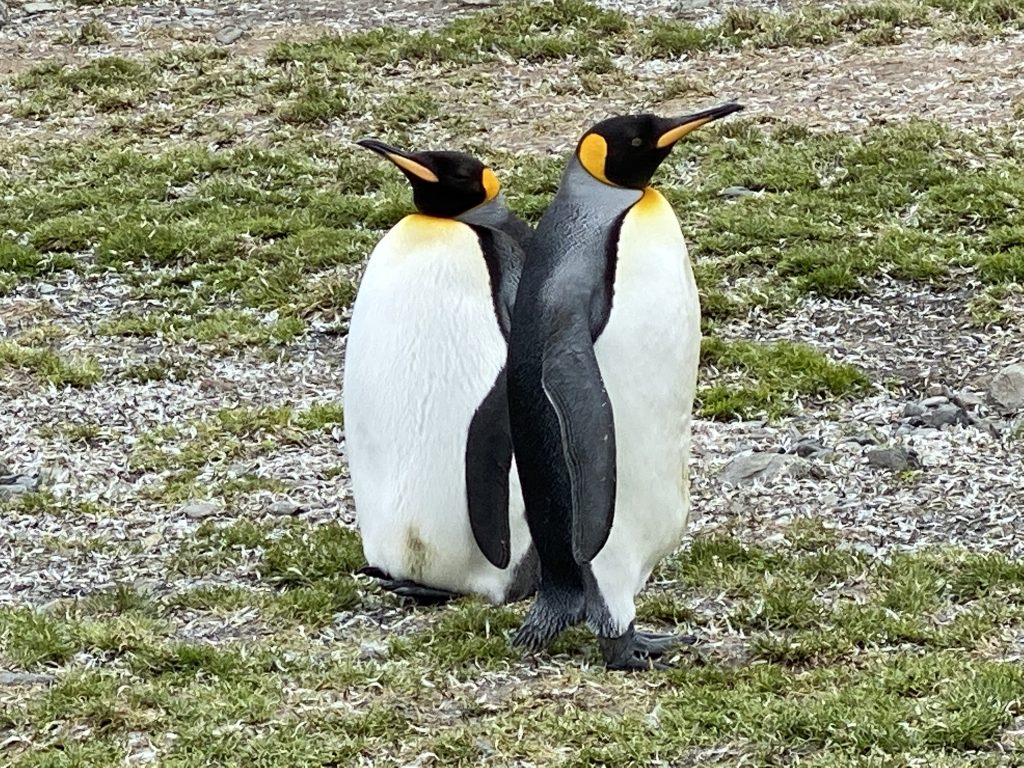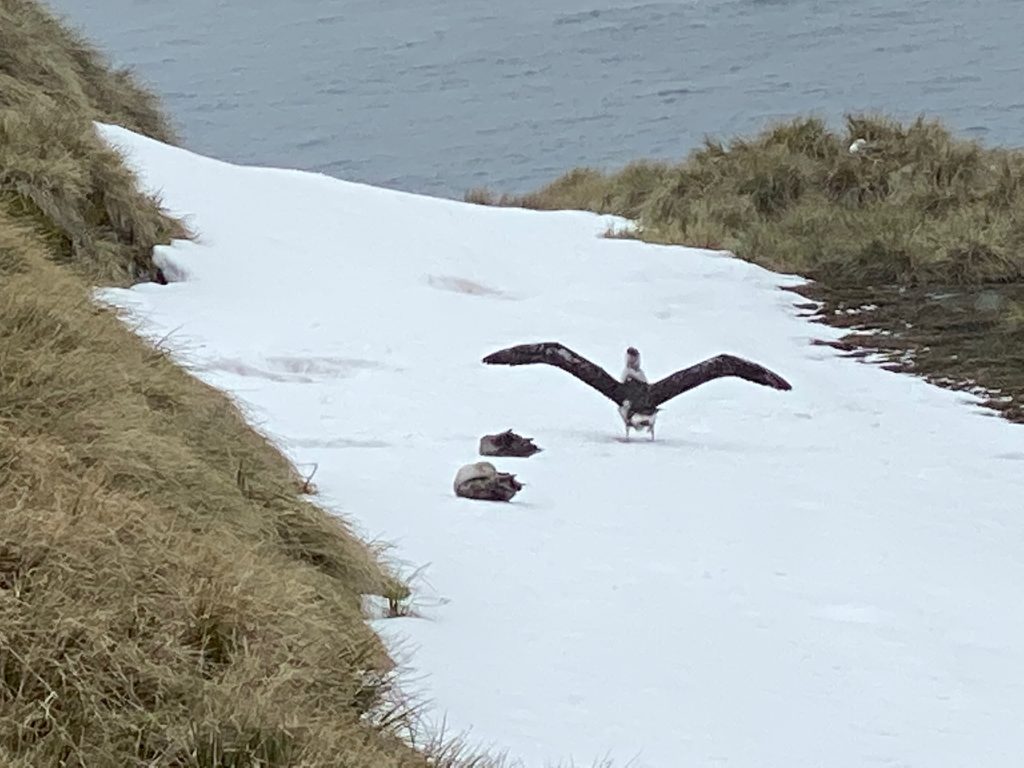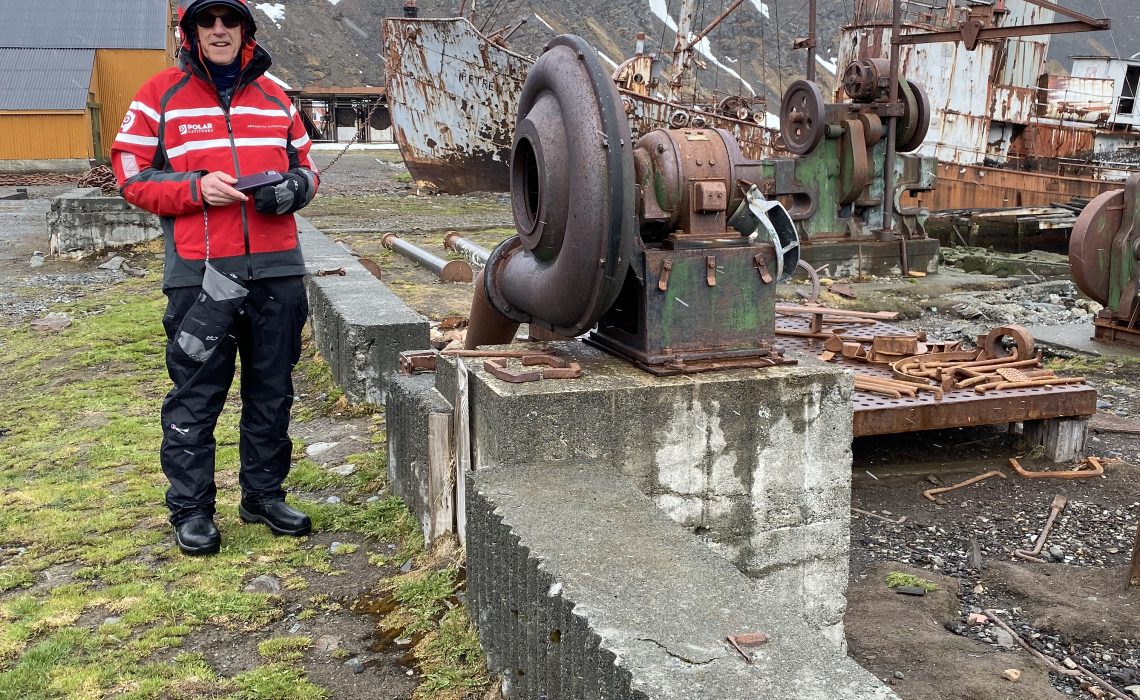
One of the most remote museums in the world
When we booked our trip to Falklands, South Georgia and Antarctica, if someone had told me there was a museum on South Georgia, I’d have probably choked on my tea. I mean, think about it – it’s seriously remote!
Miles and miles of ocean, right near Antarctica, and not exactly what you’d call a bustling metropolis. You picture icy landscapes, penguins galore, maybe a research station or two… but a museum? It just seems so unexpected! Like finding a Starbucks in the middle of the Sahara…
But that’s what makes it so brilliant, doesn’t it? The fact that in this wild, isolated place, there’s this dedicated group of people preserving the history of South Georgia, from its whaling past to its incredible natural environment. But there is more… of course!
Listen to my audio introduction above
Museum Website Launch
Now, not everyone is going to be able to visit this remote, cold and snowy region – popping down to South Georgia isn’t exactly a weekend trip for most of us! It’s an investment in both time and money, coupled with that you can only visit during the ‘summer’ season, effectively October to March and quite rightly, because the numbers of visitors to the region are restricted to protect the wildlife and the environment. Which is why I was pleased to hear the Museum has just launched their new website so that you can explore all the exhibits virtually, which is perfect. The museum’s collections include amazing photos of the island’s wildlife – think adorable penguins, majestic whales, and those massive elephant seals – and tons of information about the island’s history, from the early explorers to the whaling era and beyond. Seriously, I got lost down a rabbit hole reading about Shackleton’s adventures!
But the website isn’t just pretty pictures and history lessons it also highlights all the important work that the South Georgia Heritage Trust (SGHT), the charity which runs the museum on behalf of the South Georgia Government, does for conservation. They’ve got details on their projects to protect the local wildlife and preserve the island’s fragile ecosystem. It’s really inspiring to see how dedicated they are. Plus, you can find out about visiting the museum, if you ever get the chance, and even support their work through making your own donation.
What to See On an In-Person Visit
One of the things that makes the South Georgia Museum so special is its location. The museum is located in Grytviken, which is a former whaling station and housed in the old manager’s house, which has been restored to its original condition. The museum also has a number of outdoor exhibits and of course, a fabulous shop!
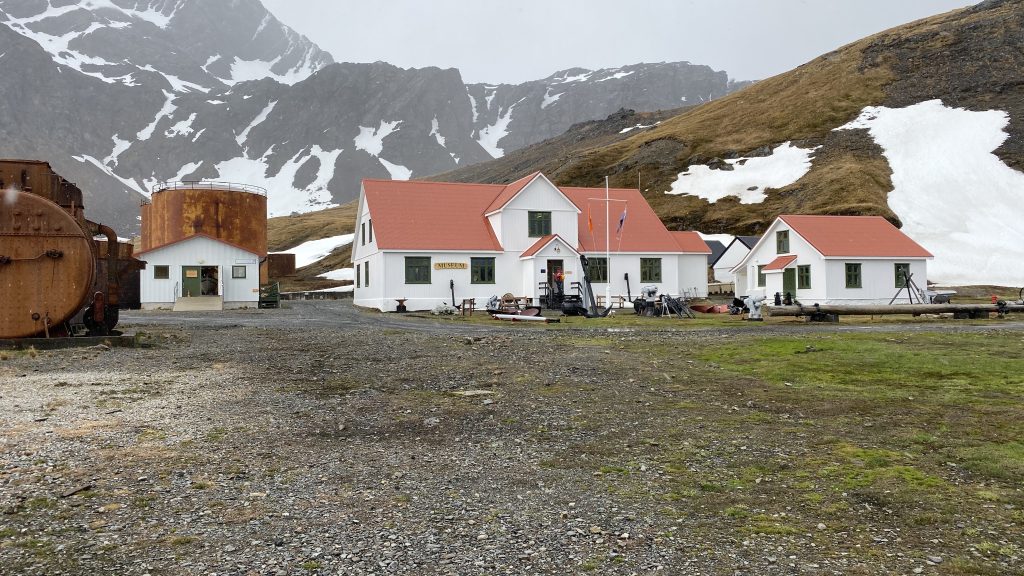
Dedicated to preserving the history and culture of South Georgia, the museum houses fabulous collections of artefacts and exhibits that tell the story of the island, from its early days as a whaling station to its more recent history as a British Overseas Territory. Plus, a number of exhibits on the natural history of South Georgia, including its unique wildlife.
Here’s a few snaps of what took my eye during our visit:
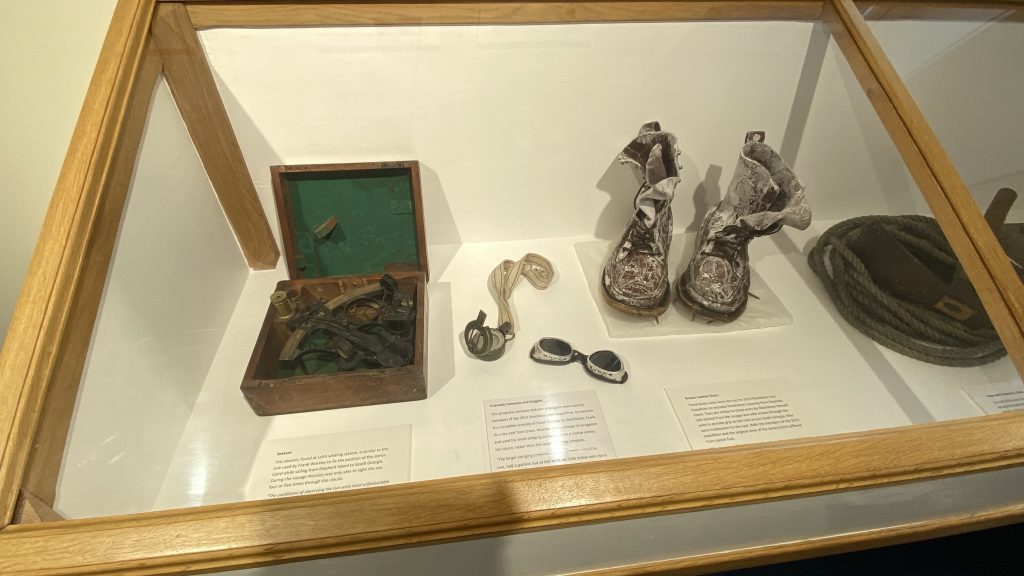
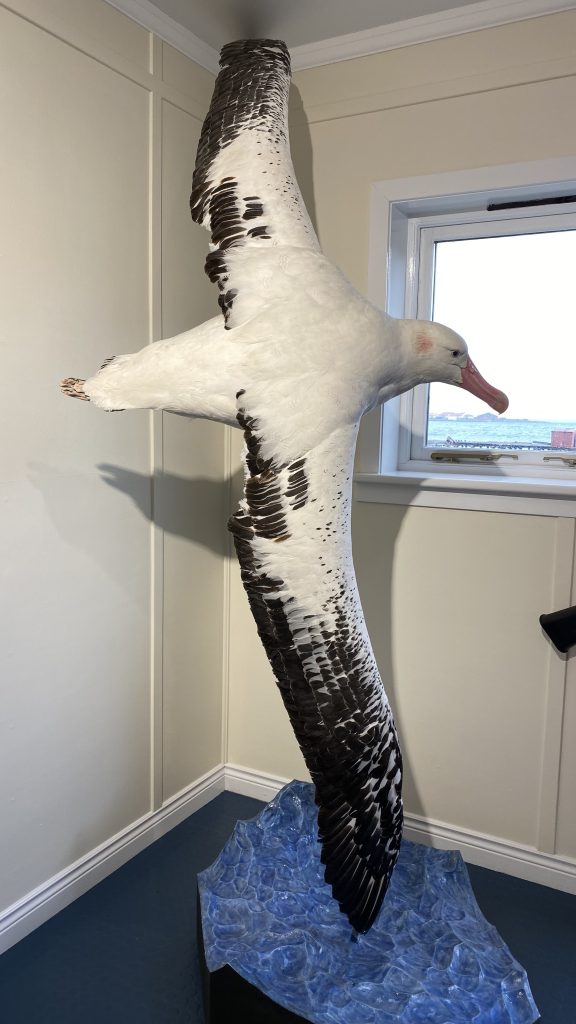
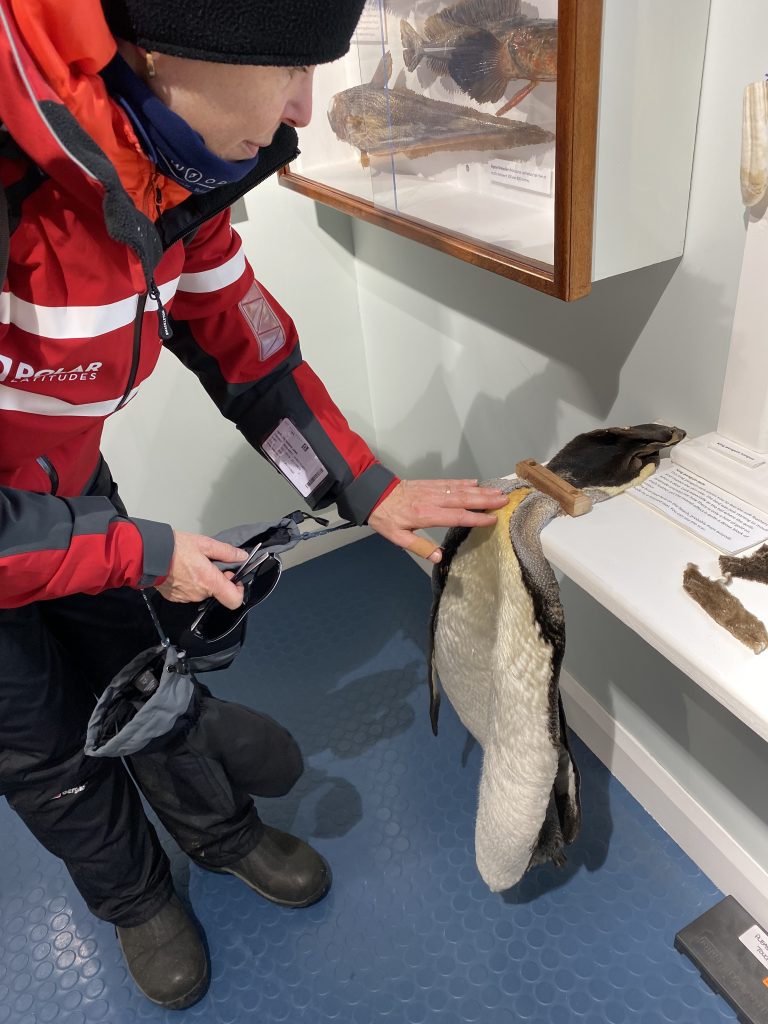
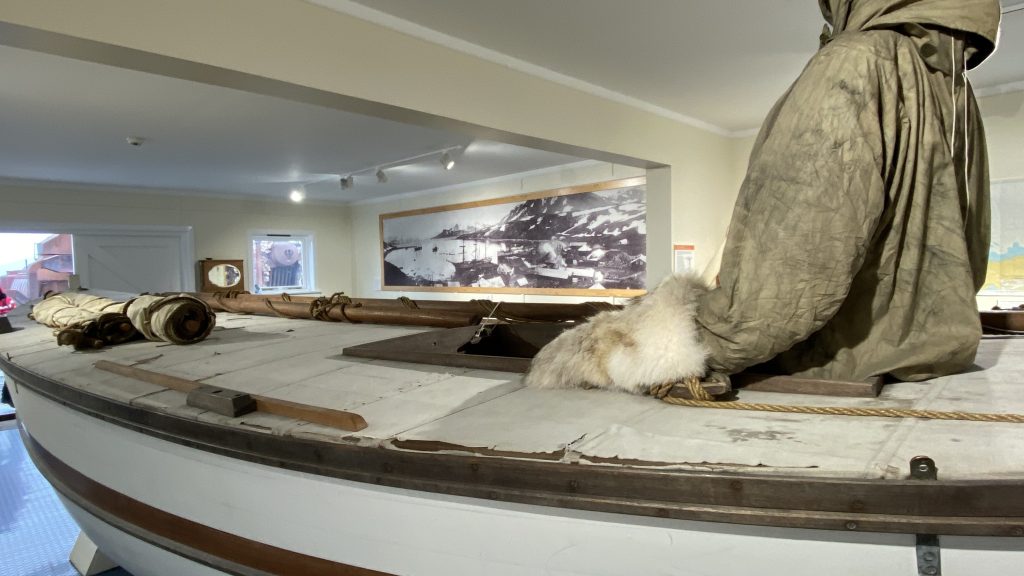
And of course, all around you at Grytviken are the remains of the whaling station itself.
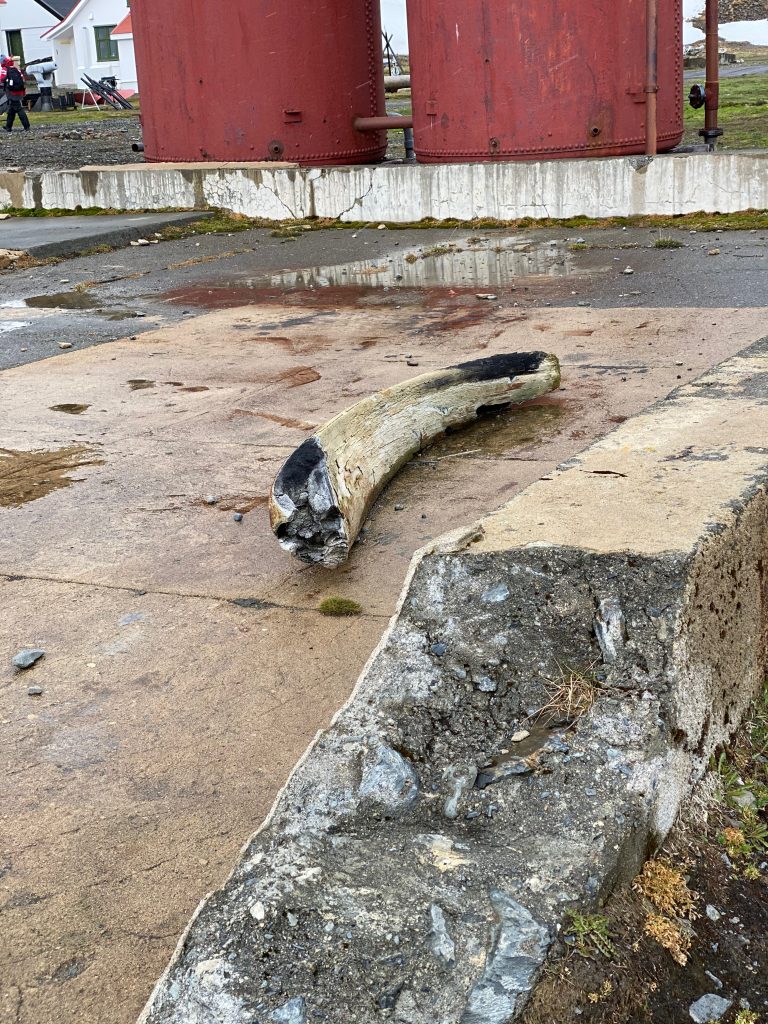
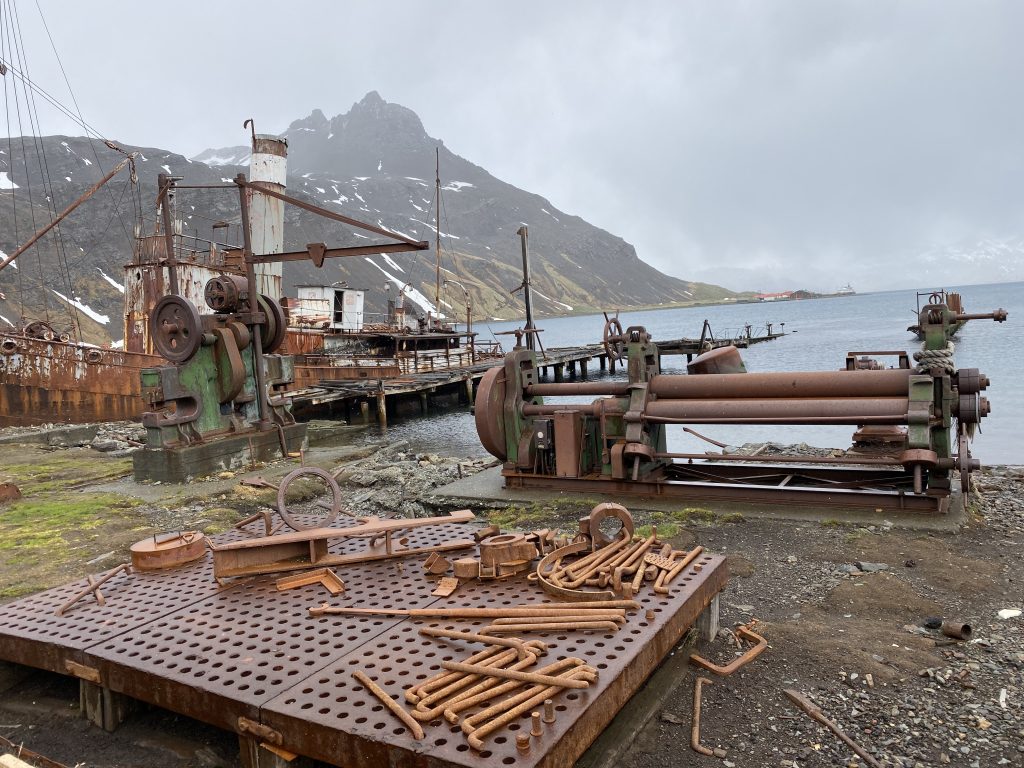
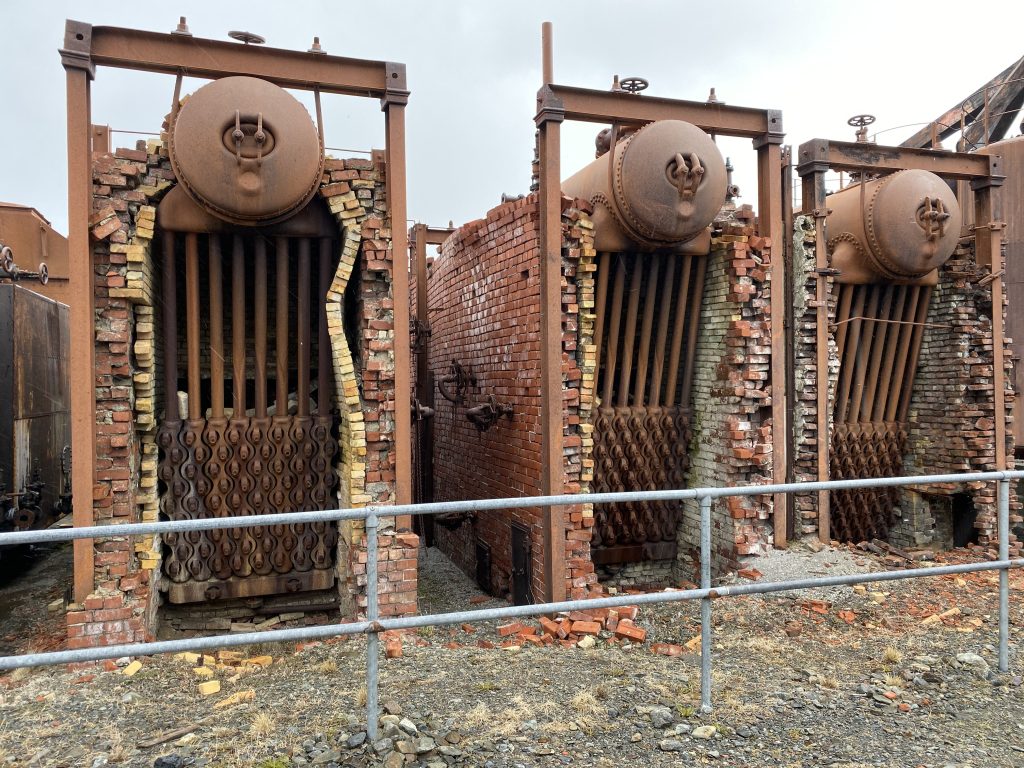
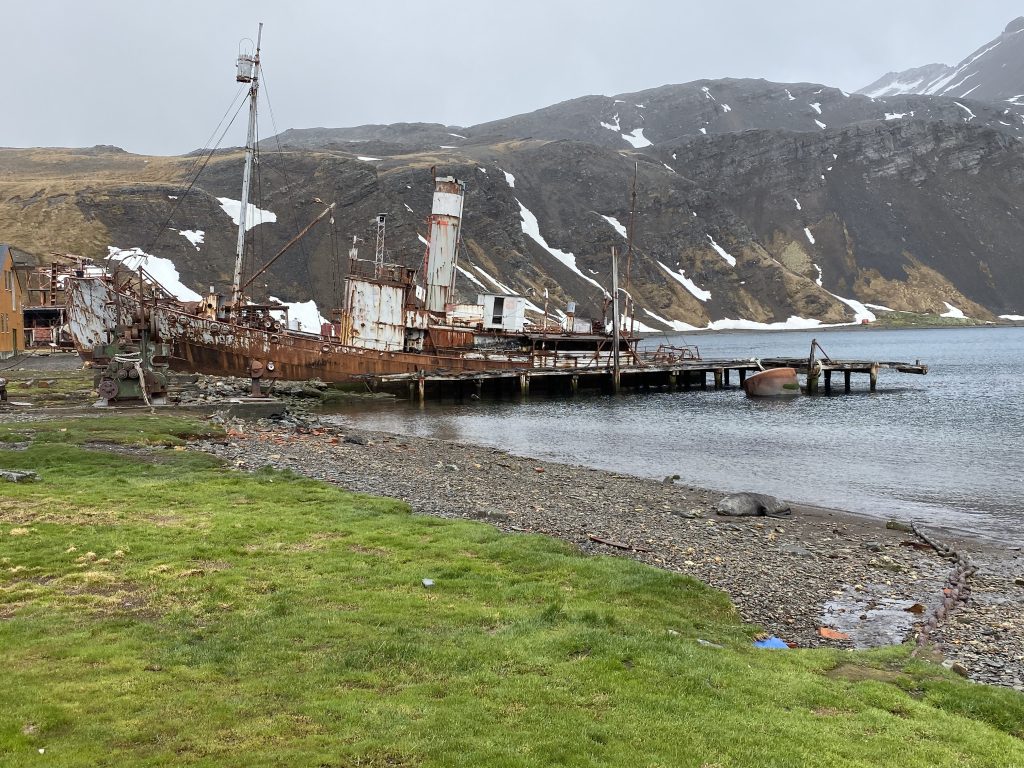
The South Georgia Museum’s crazy busy year!
Here are some things you wouldn’t think are possible for a small museum at the end of the world.
First off, they had a record-breaking season in 2023-24 with over 15,000 visitors from 103 ship visits! That’s a huge jump from ten years ago when they welcomed just over 7,000 guests and 55 ships – double the visitors! And of course we had COVID in the middle of that. It seems everyone’s keen to explore this incredible place, which of course, having been there I can understand. It’s amazing how much the museum has grown over the past decade.
Now, it hasn’t been all plain sailing. Sadly Avian Flu threw a wrench into things with ships having to change their plans, and some of the usual landing spots on South Georgia were closed. Even the cemetery at a Grytviken, where Shackleton is buried, was off-limits for a while with restricted movement for visiting passengers but the safety of the wildlife in this remarkable haven always has priority. The museum team did an amazing job keeping things running as smoothly as possible, and they were able to continue offering tours, shop access (more on that in a second!), and all their usual services. They even managed to offer 118 whaling station tours! That’s dedication for you from this small team.
And speaking of the shop… they smashed their sales target! It seems everyone wanted a little piece of South Georgia to take home with them and having been there myself, I know the treasures they have on offer – unique, high-quality pieces that truly capture the spirit of South Georgia. Here’s me, in a previous year contributing to the same.
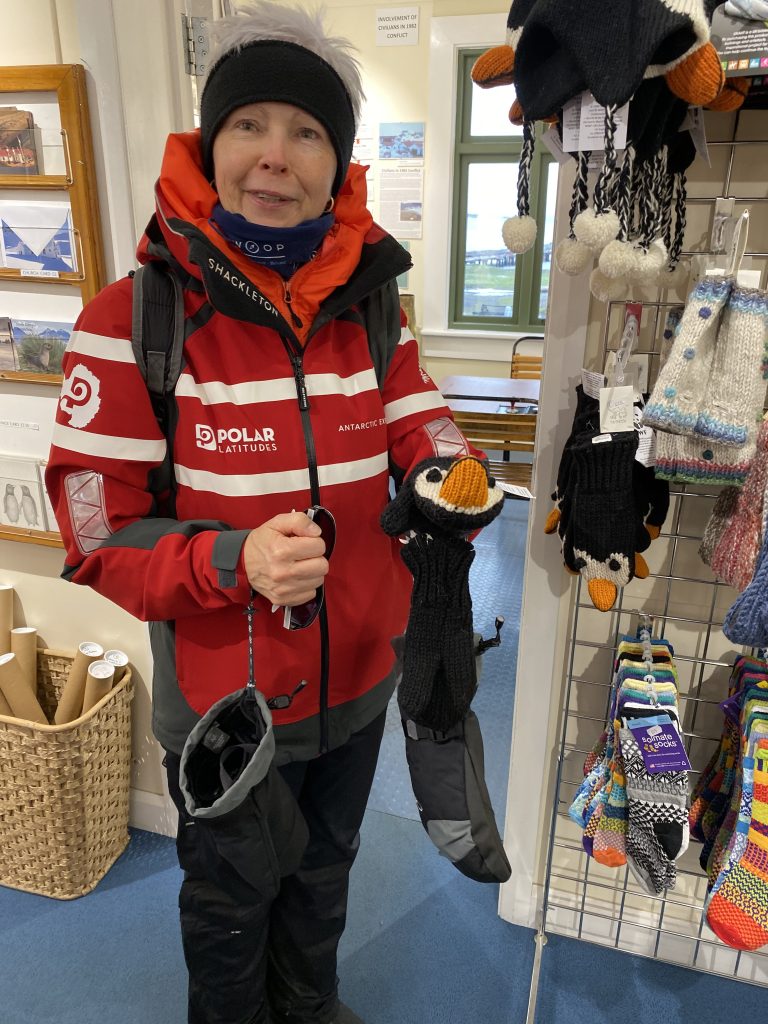
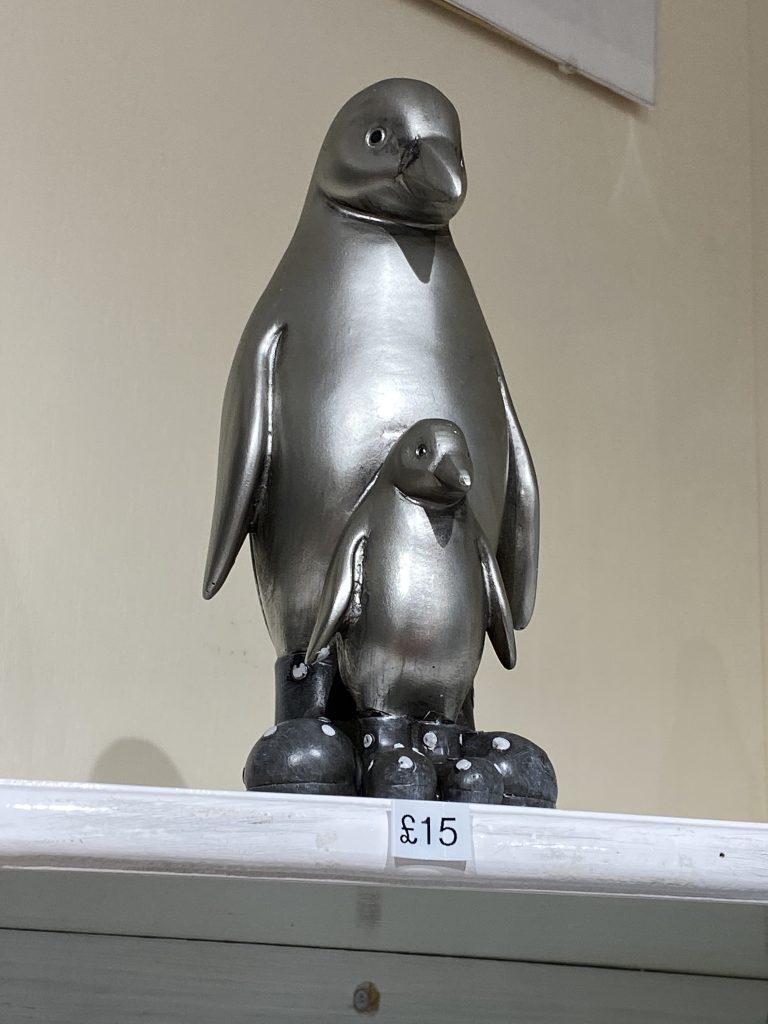
The new Epos system helped efficiency along with the ability to monitor stock levels. Predicting stock needs for one of the world’s most remote museum must be a logistical nightmare, balancing the desire to offer unique souvenirs with the challenges of infrequent supply ships, unpredictable visitor numbers, and the ever-present risk of running out of popular items halfway through the season.
One of the things I remember most is the fun ‘fundraising’ auction we had onboard the ship, mind you the champagne was flowing so that certainly helped! It followed an onboard talk from the SGHT folk where we heard all about their initiatives and projects like the rodent detection dogs and albatross tagging. We were all really keen to support their fundraising and contribute where we could to the conservation of this wildlife haven, that we had all been enjoying, as well as the planned whale memorial to celebrate the return of the whales to the waters of South Georgia. Despite slightly reduced ship visits, fundraising went well.
Even in the most far-flung corners of the world, stories are waiting to be told.
What you perhaps wouldn’t guess is in the background curatorial work that goes on, some of which I am sharing with you here. Fascinating projects like conserving old diaries and books (Shackleton’s South!) and working with other museums on projects like Shackleton’s Hope Cross – the original memorial wooden cross made from wood that is now housed at Discovery Point in Dundee so it can be preserved. The museum team are also developing a “Whalers’ Memory Bank,” which sounds incredible. SGHT held workshops with former whalers to capture their stories – imagine the history they must hold! This is such an important project to preserve the heritage of South Georgia. A new ‘on-island’ exhibition in the Jarvis Room is now open with an interactive display dedicated to South Georgia’s whales – past, present and future and will soon be online too at the new website.
Honestly, I’m so impressed with everything the South Georgia Museum is doing. They’re not just preserving history; they’re bringing it to life. If you ever get the chance to visit, I highly recommend it, it’s an unforgettable experience. In the meantime, immerse yourself in the Museum’s new website.

Every Click Counts: Fueling a Greener Future, One Story at a Time. Our planet whispers a plea for change, every day. Every small step we take – from reusable bags to conscious consumption – ripples outwards, creating a wave of hope. Let’s rewrite the story of our planet, one click at a time. Join me in making a difference. I believe in the power of storytelling. By sharing inspiring environmental initiatives and practical tips, I aim to amplify the voices making a difference. Imagine a world where everyone is empowered to take action, one small change at a time. Together, we can create that reality. Your support is more than just a donation. By clicking the “Donate” button (top right corner), you become a partner in this mission. Your contribution fuels this platform, allowing me to share even more impactful stories and empower a global community.
Join the Guardians: Shaping the Future of South Georgia
Becoming a Guardian of the South Georgia Heritage Trust is like joining a team of real-life superheroes protecting a piece of paradise! At least, that’s my perception. The Trust works to preserve and protect South Georgia’s unique environment and historical sites. By becoming a Guardian, you’re directly contributing to their efforts to conserve this incredible place helping to fund vital conservation projects, research initiatives, and educational programs. This includes the creation of the Commensalis sculpture, a stunning memorial to the island’s whaling history and its marine life. So, by becoming a Guardian, you’re not just donating; you’re actively shaping the future of South Georgia and supporting a truly inspiring project.
You join me as a Guardian by gifting as little as £10 a month for 12 months either for yourself or for someone else – just choose your team, whether that’s ‘Chinstrap’, ‘Gentoo’ or ‘King’ or join team ‘Albatross’ with a lifetime membership. All you need to know is HERE.
